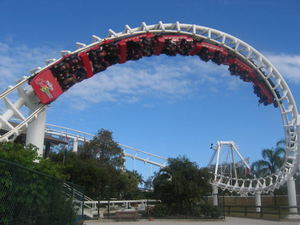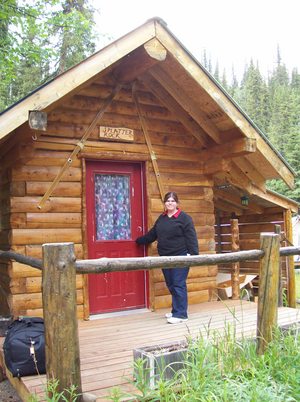I’m trying to convince my friend to let me take her son on a serious roller coaster this fall. I’m pretty sure he is a daredevil, like my own son, but his mom is definitely not ready to see her boy go zipping away on a looping steel monster at around 60 miles per hour. She’s counting on him not quite reaching the minimum height requirement, so the theme park can be the one to tell him no. I’m betting he’ll grow just enough before then to put the decision back on his parents.
As a bit of a roller coaster fanatic myself, I can imagine how disappointed her son will be if he is standing in front of the ride, knows he meets the height requirements and still can’t go. Something tells me if he makes the cut off, I will be able to convince his mom to let him ride.
But what about your children? When it comes to thrill rides, how do you know when it’s okay to let your kids hop on board? Here are a few guidelines from my personal experience as both a rider and a mom.
Make sure it’s safe
Roller coasters at reputable theme parks are inspected regularly, both by the park and by state inspectors. Serious accidents on stationary thrill rides are rare, but they can happen. Always remember that the height requirements and other restrictions are in place for a reason. Don’t try to sneak your kid past the ride operator when you know they are too small. The restraints are designed for a certain range, and anyone outside that range may not be safe riding the ride.
Choose steel over wood
Some coaster enthusiasts love old wooden coasters more than anything you could engineer from tubular steel. And those who are afraid of the loops and twists of a steel coaster may take comfort in the simplicity of a wooden wonder. But wooden coasters are notorious for giving riders a rough experience, jostling people and tossing them about. Many wooden coasters, because they have no inversions, are also equipped with only lap restraints.
Steel coasters may come with a wide range of lifts, drops, inversions and loops, but they are generally a very smooth ride. Also, they most often come with advanced restraints that help protect the head, neck and shoulders and keep riders of all approved sizes locked tightly in place. Parents should take more than just inversions into account when deciding whether to allow their child to ride a roller coaster.
Don’t push a kid to ride
I made the mistake of pressuring my daughter to ride a big wooden coaster at Six Flags. She was very scared and only went on the ride because I really believed that once she got past the initial fear, she’d love the thrill. I was wrong. She never got over the fear and she was injured because she tried her best to keep her head ducked down during the ride. She banged her mouth on the lap restraint and ended up with a bloody lip.
Now, many tears and a guilty conscience later, I realize you can encourage a reluctant rider who really does want to ride, but you should never push one who doesn’t. If your child truly does not want to ride a roller coaster, even the little kiddie coasters, they have a much greater chance of having a negative experience or even being hurt.
More by Tavia:
How to Carry Valuables at Amusement Parks
Show Your Kids Some Enthusiasm
Teaching Your Child to Overcome Fear






